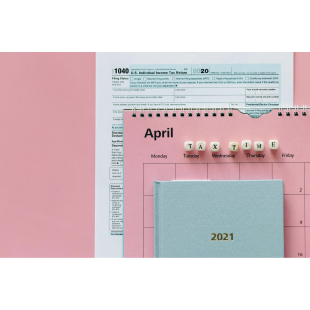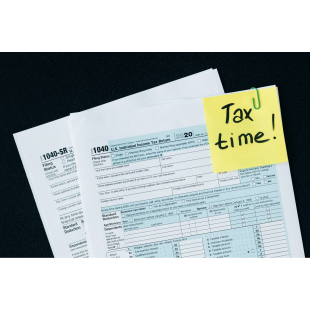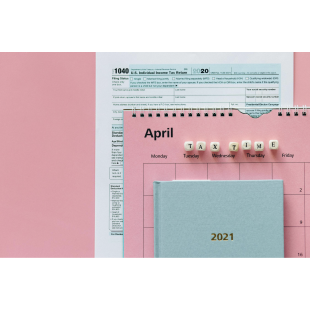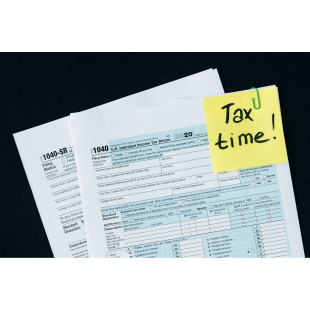All News
-

IRS provides transition relief for third party settlement organizations
IRS provides transition relief for third party settlement organizations; Form 1099-K threshold is $5,000 for calendar year 2024
WASHINGTON — The Internal Revenue Service today issued Notice 2024-85 providing transition relief for third party settlement organizations (TPSOs), also known as payment apps and online marketplaces, regarding transactions during calendar years 2024 and 2025.
Under the guidance issued today, TPSOs will be required to report transactions when the amount of total payments for those transactions is more than $5,000 in 2024; more than $2,500 in 2025; and more than $600 in calendar year 2026 and after.
Notice 2024-85 also announces for calendar year 2024, that the IRS will not assert penalties under section 6651 or 6656 for a TPSO’s failure to withhold and pay backup withholding tax during the calendar year.
TPSOs that have performed backup withholding for a payee during calendar year 2024 must file a Form 945 and a Form 1099-K with the IRS and furnish a copy to the payee.
For calendar year 2025 and after, the IRS will assert penalties under section 6651 or 6656 for a TPSO’s failure to withhold and pay backup withholding tax.
Source: IRS.gov
US TAX, U.S. TAX
IRS provides transition relief for third party settlement organizationsmore -

Taxpayers should be cautious of scammers targeting disaster donations
Scammers commonly set up fake charities to take advantage of people’s generosity during natural disasters and other tragic events. Taxpayers should use the Tax Exempt Organization Search tool to check that an organization is legitimate before they donate money.
Tips for donating safely
Follow these tips before making a charitable donation:
Always verify. Scammers use names that sound like well-known charities to confuse people. Fake charity promoters may use emails, fake websites, or altered or "spoofed" caller ID to make it look like a real charity is calling to solicit donations. Potential donors should ask the fundraiser for the charity's name, website and mailing address so they can independently confirm the information. Use the TEOS tool to verify if an organization is a legitimate tax exempt charity.
Be cautious about how a donation is requested. Never work with charities that ask for donations by giving numbers from a gift card or by wiring money. That's a scam. It's safest to pay by credit card or check — and only after verifying the charity is real.
Don't share too much information. Scammers are on the lookout for both money and personal information. Never disclose Social Security numbers, credit card numbers, personal identification numbers or passwords.
Don't give in to pressure. Scammers often pressure people into making an immediate payment. In contrast, legitimate charities are happy to get a donation at any time. Donors should not feel rushed.
Taxpayers who encounter a fake or suspicious charity should see the FBI’s resources on charity and disaster fraud.
Claim a deduction Taxpayers who give money or goods to a charity can claim a deduction if they itemize deductions, but these donations count only if they go to a qualified tax exempt organization recognized by the IRS.
More information
National Center for Disaster Fraud
DisasterAssistance.gov
Dirty-Dozen
Source: IRS.gov
US TAX, U.S. TAX
Taxpayers should be cautious of scammers targeting disaster donationsmore -

Tables for the Tax Year (TY) 2021 Foreign-Controlled Domestic Corporation study are now available on SOI's Tax Stats webpage
Tables for the Tax Year (TY) 2021 Foreign-Controlled Domestic Corporation study are now available on SOI's Tax Stats webpage. The tables, based on data from the Form 1120 series, include balance sheets, income statements, and tax-related data for domestic corporations with 50-percent-or-more stock ownership by a single foreign "person." The data are classified by industry group, country of ownership, age of the corporations, and sizes of total assets and business receipts.
There were 149,000 federal income tax returns filed by foreign-controlled domestic corporations (FCDCs) for TY 2021.These returns accounted for just 2.2 percent of all corporate returns filed for that year. However, the FCDCs were often large companies, with a combined $16.2 trillion of assets and $6.6 trillion of receipts. They reported 11.4 percent of the assets and 16.7 percent of the receipts of all corporations.
Manufacturing companies accounted for $2.8 trillion of the FCDC receipts. Domestic companies with Japanese owners produced $1.0 trillion of receipts, followed by owners from the Netherlands ($0.9 trillion) and the United Kingdom ($0.8 trillion). Established corporations (those incorporated in 2018 or before) produced $6.4 trillion of receipts. Large corporations, each with $2.5 billion or more of assets and those each with $1.0 billion or more or business receipts, accounted for $4.4 trillion and $5.1 trillion of receipts, respectively
Source: IRS.gov
US TAX, U.S. TAX
Tables for the Tax Year (TY) 2021 Foreign-Controlled Domestic Corporation study are now available on SOI's Tax Stats webpagemore -

Interest rates remain the same for the fourth quarter of 2024
WASHINGTON — The Internal Revenue Service today announced interest rates will remain the same for the calendar quarter beginning Oct. 1, 2024.
For individuals, the rate for overpayments and underpayments will be 8% per year, compounded daily.
Here’s a complete list of the new rates:
8% for overpayments (payments made in excess of the amount owed), 7% for corporations.
5.5% for the portion of a corporate overpayment exceeding $10,000.
8% for underpayments (taxes owed but not fully paid).
10% for large corporate underpayments.
Under the Internal Revenue Code, the rate of interest is determined on a quarterly basis. For taxpayers other than corporations, the overpayment and underpayment rate is the federal short-term rate plus three percentage points.
Generally, in the case of a corporation, the underpayment rate is the federal short-term rate plus three percentage points and the overpayment rate is the federal short-term rate plus two percentage points. The rate for large corporate underpayments is the federal short-term rate plus five percentage points. The rate on the portion of a corporate overpayment of tax exceeding $10,000 for a taxable period is the federal short-term rate plus one-half (0.5) of a percentage point.
The interest rates announced today are computed from the federal short-term rate determined during July 2024.
Source: IRS.gov
US TAX, U.S. TAX
Interest rates remain the same for the fourth quarter of 2024more -

IRS provides relief to Minnesota victims of severe storms, flooding; various deadlines postponed to Feb. 3, 2025
WASHINGTON — The Internal Revenue Service announced today tax relief for individuals and businesses in 25 Minnesota counties affected by severe storms and flooding that began on June 16, 2024.
These taxpayers now have until Feb. 3, 2025, to file various federal individual and business tax returns and make tax payments.
The IRS is offering relief to any area designated by the Federal Emergency Management Agency (FEMA).
This means that individuals and households that reside or have a business in Blue Earth, Carver, Cass, Cook, Cottonwood, Faribault, Fillmore, Freeborn, Goodhue, Itasca, Jackson, Lake, Le Sueur, Mower, Murray, Nicollet, Nobles, Pipestone, Rice, Rock, St. Louis, Steele, Wabasha, Waseca and Watonwan counties qualify for tax relief.
The same relief will be available to any other counties added later to the disaster area. The current list of eligible localities is always available on the Tax relief in disaster situations page on IRS.gov.
Filing and payment relief
The tax relief postpones various tax filing and payment deadlines that occurred from June 16, 2024, through Feb. 3, 2025 (postponement period). As a result, affected individuals and businesses will have until Feb. 3, 2025, to file returns and pay any taxes that were originally due during this period.
This means, for example, that the Feb. 3, 2025, deadline will now apply to:
• Any individual, business or tax-exempt organization that has a valid extension to file their 2023 federal return. The IRS noted, however, that payments on these returns are not eligible for the extra time because they were due last spring before the storms occurred.
• Quarterly estimated income tax payments normally due on June 17 and Sept. 16, 2024, and Jan. 15, 2025.
• Quarterly payroll and excise tax returns normally due on July 31 and Oct. 31, 2024, and Jan. 31, 2025.
In addition, penalties for failing to make payroll and excise tax deposits due on or after June 16, 2024, and before July 1, 2024, will be abated, as long as the deposits were made by July 1, 2024.
The Disaster assistance and emergency relief for individuals and businesses page has details on other returns, payments and tax-related actions qualifying for relief during the postponement period.
The IRS automatically provides filing and penalty relief to any taxpayer with an IRS address of record located in the disaster area. These taxpayers do not need to contact the agency to get this relief.
It is possible an affected taxpayer may not have an IRS address of record located in the disaster area, for example, because they moved to the disaster area after filing their return. In these unique circumstances, the affected taxpayer could receive a late filing or late payment penalty notice from the IRS for the postponement period. The taxpayer should call the number on the notice to have the penalty abated.
In addition, the IRS will work with any taxpayer who lives outside the disaster area but whose records necessary to meet a deadline occurring during the postponement period are located in the affected area. Taxpayers qualifying for relief who live outside the disaster area need to contact the IRS at 866-562-5227. This also includes workers assisting the relief activities who are affiliated with a recognized government or philanthropic organization. Tax preparers located in the disaster area with clients located outside the disaster area can choose to use theBulk Requests from Practitioners for Disaster Relief option, described on IRS.gov.
Additional tax relief
Individuals and businesses in a federally declared disaster area who suffered uninsured or unreimbursed disaster-related losses can choose to claim them on either the return for the year the loss occurred (in this instance, the 2024 return normally filed next year), or the return for the prior year (the 2023 return filed this year). Taxpayers have extra time – up to six months after the due date of the taxpayer’s federal income tax return for the disaster year (without regard to any extension of time to file) – to make the election. For individual taxpayers, this means Oct. 15, 2025. Be sure to write the FEMA declaration number – 4797-DR − on any return claiming a loss. See Publication 547, Casualties, Disasters, and Thefts, for details.
Qualified disaster relief payments are generally excluded from gross income. In general, this means that affected taxpayers can exclude from their gross income amounts received from a government agency for reasonable and necessary personal, family, living or funeral expenses, as well as for the repair or rehabilitation of their home, or for the repair or replacement of its contents. See Publication 525, Taxable and Nontaxable Income, for details.
Additional relief may be available to affected taxpayers who participate in a retirement plan or individual retirement arrangement (IRA). For example, a taxpayer may be eligible to take a special disaster distribution that would not be subject to the additional 10% early distribution tax and allows the taxpayer to spread the income over three years. Taxpayers may also be eligible to make a hardship withdrawal. Each plan or IRA has specific rules and guidance for their participants to follow.
The IRS may provide additional disaster relief in the future.
The tax relief is part of a coordinated federal response to the damage caused by these storms and is based on local damage assessments by FEMA. For information on disaster recovery, visit disasterassistance.gov.
Reminder about tax return preparation options
• Eligible individuals or families can get free help preparing their tax return at Volunteer Income Tax Assistance (VITA) or Tax Counseling for the Elderly (TCE) sites. To find the closest free tax help site, use the VITA Locator Tool or call 800-906-9887. Note that normally, VITA sites cannot help claim disaster losses.
• To find an AARP Tax-Aide site, use the AARP Site Locator Tool or call 888-227-7669.
• Any individual or family whose adjusted gross income (AGI) was $79,000 or less in 2023 can use IRS Free File’s guided tax software at no cost. There are products in English and Spanish.
• Another Free File option is Free File Fillable Forms. These are electronic federal tax forms, equivalent to a paper 1040 and are designed for taxpayers who are comfortable filling out IRS tax forms. Anyone, regardless of income, can use this option.
• MilTax, a Department of Defense program, offers free return preparation software and electronic filing for federal tax returns and up to three state income tax returns. It’s available for all military members and some veterans, with no income limit
Source: IRS.gov
US TAX, U.S. TAX
IRS provides relief to Minnesota victims of severe storms, flooding; various deadlines postponed to Feb. 3, 2025more -

Taxpayers should review the education tax credits before they file
There are two education tax credits designed to help offset education costs: the American Opportunity Tax Credit and the Lifetime Learning Credit.
Eligibility requirements
For both tax credits, to be eligible:
- The taxpayer, their spouse or their dependents must take post-high school coursework in tax year 2024.
- The student must have a Form 1098-T, Tuition Statement, from an eligible educational institution. There are exceptions for some students.
Things taxpayers should know about the education tax credits.
The American Opportunity Tax Credit is:
- Worth a maximum benefit of up to $2,500 per eligible student.
- Available only for the first four years at an eligible college or vocational school.
- For students pursuing a degree or other recognized education credential.
- Partially refundable. People could get up to $1,000 back.
The Lifetime Learning Credit is:
- Worth a maximum benefit of up to $2,000 per tax return, per year, no matter how many students qualify.
- Available for all years of postsecondary education and for courses to acquire or improve job skills.
- Available for an unlimited number of tax years.
Claiming the credits
To claim either credit, taxpayers must complete Form 8863, Education Credits, and file it with their federal tax return.
Source: IRS.gov
US TAX, U.S. TAX
Taxpayers should review the education tax credits before they filemore -

COPY-IRS has options to help people who missed the April filing deadline
WASHINGTON — The U.S. Department of the Treasury and the Internal Revenue Service today issued final regulations requiring custodial brokers to report sales and exchanges of digital assets, including cryptocurrency. These reporting requirements will help taxpayers to file accurate tax returns with respect to digital asset transactions, which are already subject to tax under current law.
These final regulations reflect consideration of more than 44,000 public comments received last fall on the proposed regulations. They require brokers to report certain sale and exchange transactions that take place beginning in calendar year 2025 and will be reported on the soon-to-be released Form 1099-DA. The regulations implement reporting requirements by the Infrastructure Investment and Jobs Act, enacted in 2021.
“We reviewed thousands of public comments and believe this new guidance addresses those concerns while striking a balance between industry implementation challenges and closing the tax gap related to digital assets,” said IRS Commissioner Danny Werfel. “These regulations are an important part of the larger effort on high-income individual tax compliance. We need to make sure digital assets are not used to hide taxable income, and these final regulations will improve detection of noncompliance in the high-risk space of digital assets. Our research and experience demonstrate that third-party reporting improves compliance. In addition, these regulations will provide taxpayers with much needed information, which will reduce burden and simplify the process of reporting their digital asset activity.”
“Our work to address potential non-compliance in digital currency is another reason why it is so critical to fully fund IRS operations,” Werfel added. “These new assets expand the complexity of our tax system, and the technology and personnel necessary for the IRS to keep pace with these changes is resource intensive. Ultimately, this IRS funding helps address emerging issues and creates significantly more savings than costs to the government’s bottom line.”
The final regulations require reporting by brokers who take possession of the digital assets being sold by their customers. These brokers include operators of custodial digital asset trading platforms, certain digital asset hosted wallet providers, digital asset kiosks, and certain processors of digital asset payments (PDAPs). The majority of digital asset transactions today occur using these brokers. By focusing first on this group, the IRS intends these regulations to cover the greatest number of taxpayers while allowing the IRS and U.S. Treasury Department more time to consider the nuances of transactions involving non-custodial and decentralized brokers.
The final regulations do not include reporting requirements for brokers that do not take possession of the digital assets being sold or exchanged. These brokers are commonly called decentralized or non-custodial brokers. The U.S. Treasury Department and the IRS intend to provide rules for these brokers in a different set of final regulations.
In addition to the broker reporting rules, the regulations provide rules for taxpayers to determine their basis, gain, and loss from digital asset transactions. The regulations also provide backup withholding rules.
The IRS is aware of the challenges that implementing new reporting requirements can pose, which is why the agency is also providing transitional and penalty relief from reporting and backup withholding rules on certain transactions to help phase-in implementation.
Real estate professionals are also required to report the fair market value of digital assets paid by buyers and received by sellers in real estate transactions with closing dates on or after January 1, 2026.
The final regulations provide for an optional, aggregate reporting method for certain sales of stablecoins and certain non-fungible tokens (NFTs) applicable only after sales of these stablecoins and NFTs exceed de minimis thresholds. For PDAP transactions, the regulations require reporting on a transactional basis only if the customer’s sales are above a de minimis threshold.
Finally, basis reporting will be required by certain brokers, for transactions occurring on or after January 1, 2026.
Additional guidance to provide transitional relief regarding digital asset transactions includes:
Transitional relief Notice 2024-56 provides general transitional relief from reporting penalties and backup withholding for any broker who does not timely and accurately file information returns and furnish payee statements for sales and exchanges of digital assets during calendar year 2025, provided that the broker makes a good faith effort to comply with the reporting obligations. Additionally, the Notice provides more limited relief from backup withholding for certain sales of digital assets during 2026 for brokers using the IRS’s TIN-matching system in place of certified TINs. Finally, the Notice also provides backup withholding relief for exchanges of digital assets in return for specified NFTs and real property and for certain sales effected by PDAPs.
Delay on information reporting for certain transactions until future guidance is issued Notice 2024-57 informs brokers that until the U.S. Treasury Department and the IRS issue further guidance, brokers will not have to file information returns or furnish payee statements on digital asset sales and exchanges for the following six types of transactions:
Wrapping and unwrapping transactions,
Liquidity provider transactions,
Staking transactions,
Transactions described by digital asset market participants as lending of digital assets,
Transactions described by digital asset market participants as short sales of digital assets, and
Notional principal contract transactions.
Transition from universal or multi-wallet approach to allocating basis in digital assets to wallet by wallet or account by account approach. Revenue Procedure 2024-28 generally permits taxpayers to rely on any reasonable allocation of units of unused basis to wallets or accounts that hold the same number of remaining digital asset units based on the taxpayers’ records of unused bases and remaining units in those wallets or accounts.
Source: IRS.gov
US TAX, U.S. TAX
COPY-IRS has options to help people who missed the April filing deadlinemore -

IRS has options to help people who missed the April filing deadline
The Internal Revenue Service today highlighted a number of options available to help taxpayers who missed the April deadline to file their 2023 federal income tax return.
To help struggling taxpayers, the IRS has important payment programs that can help those who have trouble paying the amount owed and special first-time penalty relief for those who qualify.
The IRS reminded people that paying what they can as soon as possible will limit penalty and interest charges, which can grow quickly under the tax laws. The interest rate for an individual's unpaid taxes is currently 8%, compounded daily. The late-filing penalty is generally 5% per month and the late-payment penalty is normally 0.5% per month, both of which max out at 25%.
If a return is filed more than 60 days after the due date, the minimum penalty is either $485 or 100% of the unpaid tax, whichever is less. The failure to pay penalty rate is generally 0.5% of unpaid tax owed for each month or part of a month until the tax is fully paid or until 25% is reached. The rate is subject to change. For more information, see Penalties on IRS.gov.
However, taxpayers can limit late-payment penalties and interest charges by paying their tax electronically. The fastest and easiest way to do that is with IRS Direct Pay, a free service available only on IRS.gov. Several other electronic payment options are also available. Visit Make a Payment for details.
File and pay what they can to reduce penalties and interest
Taxpayers should file their tax return and pay any taxes they owe as soon as possible to reduce penalties and interest. An extension to file is not an extension to pay. An extension to file provides an additional six months with a new filing deadline of Oct. 15. Penalties and interest apply to taxes owed after April 15 and interest is charged on tax and penalties until the balance is paid in full.
Some may qualify for penalty relief
Anyone who receives a penalty notice from the IRS should read it carefully and follow the instructions for requesting relief. Visit Penalty Relief for information on the types of penalties, requesting penalty relief and appealing a penalty decision.
Taxpayers who have filed and paid on time and have not been assessed any penalties for the past three years often qualify to have the penalty abated. See the First-Time Penalty Abatementpage on IRS.gov. A taxpayer who does not qualify for this relief may still qualify for penalty relief if their failure to file or pay on time was due to reasonable cause and not willful neglect.
In addition to penalties, interest will be charged on any tax not paid by the April 15 due date and any assessed penalties. Interest stops accruing as soon as the balance due is paid in full. The law does not allow for interest abatement based on reasonable cause or first-time relief.
Having trouble paying? IRS has options to help
By filing by the deadline, taxpayers avoid failure to file penalties – even if they’re unable to pay. For those who owe federal taxes, the IRS has a number of payment options available.
Taxpayers that are unable to pay in full by the tax deadline should still file their tax return, pay what they can and explore a variety of payment options available for the remaining balance. The IRS offers several options to help them meet their tax obligation, including applying for an online payment plan.
Taxpayers can receive an immediate response of payment plan acceptance or denial without calling or writing to the IRS. Online payment plan options include:
Short-term payment plan – The total balance owed is less than $100,000 in combined tax, penalties and interest. Additional time of up to 180 days to pay the balance in full.
Long-term payment plan – The total balance owed is less than $50,000 in combined tax, penalties and interest. Pay in monthly payments for up to 72 months. Payments may be set up using direct debit (automatic bank withdraw) which eliminates the need to send in a payment each month, saving postage costs and reducing the chance of default. For balances between $25,000 and $50,000, direct debit is required.
Though interest and late-payment penalties continue to accrue on any unpaid taxes after April 15, the failure to pay penalty is cut in half while an installment agreement is in effect. Find more information about the costs of payment plans on the IRS’ Additional information on payment plans webpage.
Some taxpayers get automatic extensions
Some taxpayers automatically qualify for extra time to file and pay taxes due without penalties and interest, including:
Taxpayers in certain disaster areas. There’s no need for these taxpayers to submit an extension; extra time is granted automatically due to the disaster. Information on the most recent tax relief for disaster situations is available on IRS.gov.
U.S. citizens and resident aliens who live and work outside of the United States and Puerto Rico.
Members of the military on duty outside the United States and Puerto Rico, and those serving in combat zones.
Adjust withholding to prevent tax ‘surprises’
Taxpayers should check their withholding every year to protect against having too little tax withheld and facing an unexpected tax bill or penalty at tax time next year.
The Tax Withholding Estimator helps individuals bring the tax they pay closer to what is owed. Wage earners can assess their income tax, credits, adjustments and deductions, and determine whether they need to change their withholding by submitting a new Form W-4, Employee's Withholding Allowance Certificate to their employer, not the IRS.
Source: IRS.gov
US TAX, U.S. TAX
IRS has options to help people who missed the April filing deadlinemore -

Newlyweds tax checklist
Summer wedding season has arrived, and newlyweds can make their tax filing easier by doing a few things now. A taxpayer's marital status as of December 31 determines their tax filing options for the entire year, but that's not all newlyweds need to know.
Report a name change
Report any name changes to the Social Security Administration. The name on a person's tax return must match what’s on file at the SSA. If it doesn't, it could delay any tax refund. To update information, taxpayers should file Form SS-5, Application for a Social Security Card. It’s available on SSA.gov, by phone at 800-772-1213 or at a local SSA office.
Update address
Notify the United States Postal Service, employers and the IRS of any address change. To officially change their mailing address with the IRS, taxpayers must compete and submit Form 8822, Change of Address. See page 2 of the form for detailed instructions.
Check withholding
Newly married couples must give their employers a new Form W-4, Employee's Withholding Certificate, within 10 days. If both spouses work, they may move into a higher tax bracket or be affected by the additional Medicare tax. They can use the Tax Withholding Estimator on IRS.gov to check their withholding and for help completing a new Form W-4.
Review filing status
Married people can choose to file their federal income taxes jointly or separately each year. While filing jointly is usually more beneficial, it's best to figure the tax both ways to find out which makes the most sense. Taxpayers should remember that if a couple is married as of December 31, the law says they're married for the whole year for tax purposes.
Beware of scams
All taxpayers should be aware of and avoid tax scams. The IRS will never contact a taxpayer using email, phone calls, social media or text messages. First contact generally comes in the mail. To find out if they owe money to the IRS, taxpayers can view their tax account.
Source: IRS.gov
US TAX, U.S. TAX
Newlyweds tax checklistmore -

Taxpayers living and working abroad face June 17 deadline to file their 2023 tax returns
The Internal Revenue Service reminds taxpayers living and working outside the United States to file their 2023 federal income tax return by Monday, June 17.
This deadline applies to both U.S. citizens and resident aliens abroad, including those with dual citizenship.
Qualifying for the June 17 extension
U.S. citizens or resident aliens residing overseas or on duty in the military outside the U.S. are allowed an automatic two-month extension to file their tax return and pay any amount due. A taxpayer qualifies for the June 17 extension to file and pay if:
They are living outside of the United States and Puerto Rico and their main place of business or post of duty is outside the United States and Puerto Rico, or
They are serving in the military outside the U.S. and Puerto Rico on the regular due date of their tax return.
To use the automatic two-month extension, taxpayers must attach a statement to their tax return explaining which of the two situations listed earlier applies.
Additional extensions
As a reminder, an extension of time to file a return does not grant an extension of time to pay taxes owed. Eligible taxpayers should estimate and pay any owed taxes by the June 17 deadline.
Taxpayers who can’t meet the June 17 due date can request an automatic six-month extension by filing Form 4868, Application for Automatic Extension of Time to File U.S. Individual Income Tax Return.
Taxpayers who need an extension of more than six months to meet either the bona fide residence or the physical presence test to qualify for the foreign earned income exclusion or to exclude or deduct the foreign housing costs must file IRS Form 2350, Application for Extension of Time to File U.S. Income Tax Return.
Businesses that need more time must file Form 7004, Application for Automatic Extension of Time to File Certain Business Income Tax, Information and Other Returns.
Members of the military stationed abroad or in a combat zone during tax filing season may qualify for an additional extension of at least 180 days to file and pay taxes. More information can be found in the Extension of Deadline – Combat Zone Service Q&As.
Spouses of individuals who served in a combat zone or contingency operation are generally entitled to the same deadline extensions with some exceptions. Extension details and more military tax information is available in IRS Publication 3, Armed Forces’ Tax Guide.
The IRS encourages anyone needing additional time to file an extension electronically. Filers may use IRS Free File, regardless of income, to request an automatic extension of time to file, or choose from several options at IRS.gov/Extensions.
File to claim benefits
Many taxpayers living outside the U.S. qualify for tax benefits, such as the Foreign Earned Income Exclusion and the Foreign Tax Credit, but they are available only if a U.S. return is filed.
In addition, the IRS encourages families to check out expanded tax benefits such as the Child Tax Credit, Credit for Other Dependents and Credit for Child and Dependent Care expenses, and claim them if they qualify. Though taxpayers abroad often qualify, the calculation of these credits differs depending upon whether they lived in the U.S. for more than half of 2023. For more information, see the instructions to Schedule 8812, Credits for Qualifying Children and Other Dependents, and the instructions to Form 2441, Child and Dependent Care Expenses.
Reporting required for foreign accounts and assets
U.S. citizens or resident aliens’ world-wide income is generally subject to U.S. income tax, including income from foreign trusts and foreign bank and securities accounts. In most cases, affected taxpayers need to complete and attach Schedule B, Interest and Ordinary Dividends, to their Form 1040 series tax return. Part III of Schedule B asks about the existence of foreign accounts such as bank and securities accounts and usually requires U.S. citizens to report the country in which each account is located.
In addition, certain taxpayers may also have to complete and attach to their return Form 8938, Statement of Specified Foreign Financial Assets. Generally, U.S. citizens, resident aliens and certain nonresident aliens must report specified foreign financial assets on this form if the aggregate value of those assets exceeds certain thresholds. For details, see the instructions for this form.
Further, separate from reporting specified foreign financial assets on a tax return, certain foreign financial accounts, such as bank accounts or brokerage accounts, must be reported by electronically filing Form 114, Report of Foreign Bank and Financial Accounts (FBAR), with the Treasury Department’s Financial Crimes Enforcement Network (FinCEN). The FBAR requirement applies to U.S. persons with an interest in, or signature or other authority over foreign financial accounts whose aggregate value exceeded $10,000 at any time during 2023.
The IRS encourages U.S. persons with foreign assets, even relatively small ones, to check if this filing requirement applies to them. The form is available only through the Bank Secrecy Act E-Filing System. The deadline for filing the annual FBAR is April 15, 2024. However, FinCEN grants those who missed the April deadline an automatic extension until Oct. 15, 2024. There’s no need to request this extension. See FinCEN’s website for further information.
Report in U.S. dollars
Any income received or deductible expenses paid in foreign currency must be reported on a U.S. tax return in U.S. dollars. Likewise, any tax payments must be made in U.S. dollars.
IRS Form 8938 requires the use of a Dec. 31 exchange rate for all transactions, regardless of the actual exchange rate on the date of the transaction. Generally, the IRS accepts any posted exchange rate that is used consistently. For more information on exchange rates, see Foreign Currency and Currency Exchange Rates.
The instructions for FinCEN Form 114 state that for accounts with non-United States currency, a filer should convert the maximum account value into United States dollars by using the U.S. Treasury Department’s Bureau of the Fiscal Service’s exchange rates as of the last day of the calendar year at issue. If no Bureau of the Fiscal Service rate is available, a filer can use another verifiable foreign currency exchange rate.
Making tax payments
To ensure tax payments are credited promptly, the IRS urges taxpayers to consider the convenience of paying their U.S. tax obligations electronically. The fastest and easiest way to do that is via their IRS Online Account, IRS Direct Pay and the Electronic Federal Tax Payment System (EFTPS). These and other electronic payment options are available at IRS.gov/Payments.
Reporting for expatriates
Taxpayers who relinquished their U.S. citizenship or ceased to be lawful permanent residents of the U.S. during 2023 must file a dual-status tax return and attach Form 8854, Initial and Annual Expatriation Statement. A copy of Form 8854 must also be filed with the IRS by the due date of the tax return (including extensions). See the instructions for this form and Notice 2009-85, Guidance for Expatriates Under Section 877A, for further details.
Source: IRS.gov
US TAX, U.S. TAX
Taxpayers living and working abroad face June 17 deadline to file their 2023 tax returnsmore -

Year-round tax planning pointers for taxpayers
Here are some simple things taxpayers can do throughout the year to make filing season less stressful.
Organize tax records. Create a system that keeps all important information together. Taxpayers can use a software program for electronic recordkeeping or store paper documents in clearly labeled folders. They should add tax records to their files as they receive them. Organized records will make tax return preparation easier and may help taxpayers discover overlooked deductions or credits.
Identify filing status. A taxpayer's filing status determines their filing requirements, standard deduction, eligibility for certain credits and the correct amount of tax they should pay. If more than one filing status applies to a taxpayer, they can get help choosing the best one for their tax situation with the IRS’s Interactive Tax Assistant, What Is My Filing Status. Changes in family life — marriage, divorce, birth and death — may affect a person's tax situation, including their filing status and eligibility for certain tax credits and deductions.
Understand adjusted gross income (AGI). AGI and tax rate are important factors in figuring taxes. AGI is the taxpayer's income from all sources minus any adjustments. Generally, the higher a taxpayer's AGI, the higher their tax rate and the more tax they pay. Tax planning can include making changes during the year that lower a taxpayer's AGI.
Check withholding. Since federal taxes operate on a pay-as-you-go basis, taxpayers need to pay most of their tax as they earn income. Taxpayers should check that they're withholding enough from their pay to cover their taxes owed, especially if their personal or financial situations change during the year. To check withholding, taxpayers can use the IRS Withholding Estimator. If they want to change their tax withholding, taxpayers should provide their employer with an updated Form W-4.
Make address and name changes. Taxpayers should notify the United States Postal Service, employers and the IRS of any address change. To officially change a mailing address with the IRS, taxpayers must compete Form 8822, Change of Address, and mail it to the correct address for their area. For detailed instructions, see page 2 of the form. Report any name change to the Social Security Administration. Making these changes as soon as possible will help make filing their tax return easier.
Save for retirement. Saving for retirement can also lower a taxpayer's AGI. Certain contributions to a retirement plan at work and to a traditional IRA may also reduce taxable income.
Source: IRS.gov
US TAX, U.S. TAX
Year-round tax planning pointers for taxpayersmore -

Reminder: Taxpayers must file and pay taxes even if they live abroad
It’s important that U.S. citizens and resident aliens living abroad understand their tax obligations.
Their worldwide income -- including wages, unearned income and tips -- is subject to U.S. income tax, regardless of where they live or where they earn their income. They also have the same income tax filing requirements as U.S. citizens or resident aliens living in the United States.
An income tax filing requirement applies even if a taxpayer qualifies for tax benefits such as the Foreign Earned Income Exclusion or the Foreign Tax Credit, which reduce or eliminate U.S. tax liability. These tax benefits are available only if the eligible taxpayer files a U.S. income tax return.
Taxpayers living outside of the U.S. and Puerto Rico have an automatic extension to file – but not to pay
A taxpayer has an automatic two-month extension to June 17, 2024, if both their tax home and abode are outside the United States and Puerto Rico. Even with an extension, a taxpayer will have to pay interest on any tax that wasn’t paid by the regular April due date.
Those serving in the military outside the U.S. and Puerto Rico on the regular due date of their tax return also qualify for the extension to June 17, 2024. Taxpayers should attach a statement to their tax return if one of these two situations applies. More information is in the instructions for Form 1040 and Form 1040-SR, Publication 54, Tax Guide for U.S. Citizens and Resident Aliens Abroad, and Publication 519, U.S. Tax Guide for Aliens.
Reporting requirement for foreign accounts and assets
Federal law requires U.S. citizens and resident aliens to report their worldwide income, including income from foreign trusts and foreign bank and other financial accounts.
Schedule B (Form 1040), Interest and Ordinary Dividends – In most cases, affected taxpayers attach Schedule B to their federal return to report foreign assets. Part III of Schedule B asks about the existence of foreign accounts such as bank and securities accounts and usually requires U.S. citizens and resident aliens to report the country in which each account is located.
Form 8938, Statement of Foreign Financial Assets – Some taxpayers may also need to attach Form 8938 to their return to report specified foreign financial assets if the total value of those assets exceeds certain thresholds. The instructions for this form have the details.
People must also report foreign assets of $10,000 or more to the Treasury Department
U.S. persons with an interest in or signature or other authority over foreign financial accounts where the total value exceeded $10,000 at any time during 2023 must also file a Financial Crimes Enforcement Network (FinCEN) Form 114, Report of Foreign Bank and Financial Accounts with the Treasury Department. The form is available only through the BSA E-filing System website.
The deadline for filing the annual Report of Foreign Bank and Financial Accounts was April 15, 2024. U.S. persons who missed the April deadline have an automatic extension until Oct. 15, 2024, to file the FBAR.
Source: IRS.gov
US TAX, U.S. TAX
Reminder: Taxpayers must file and pay taxes even if they live abroadmore












